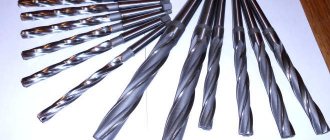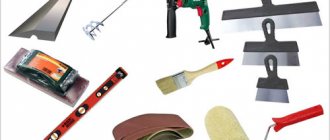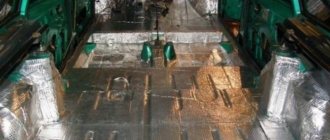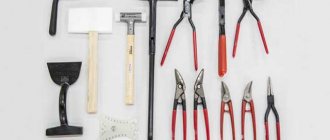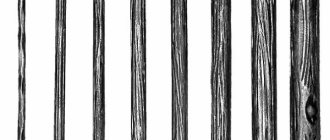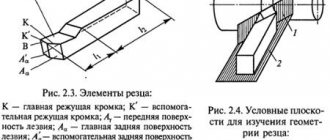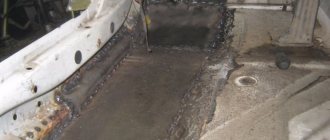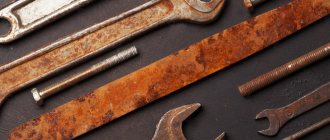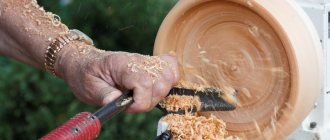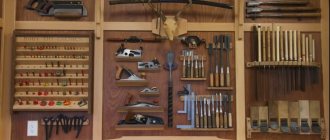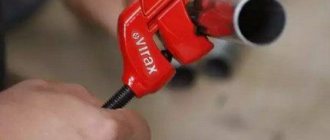Shovel
The basic tool of a summer resident is a shovel. There are many types of this tool. To dig up loose soil, use a bayonet shovel.
It is convenient to cultivate the soil in the garden using the “Mole”. We are talking about a shovel-ripper. This device allows you to simultaneously perform several tasks: digging and loosening soil, removing weeds.
The depth of soil cultivation is 25 cm. In addition to the stop, which relieves the load from the lower back, the tool is equipped with counter forks that break up clods of earth.
Features of soil treatment
The eternal law of balance says that if something has arrived, it means that somewhere has lost. In gardening, this is expressed in a pattern - the richer the harvest, the more the land is depleted. To preserve and restore the fertile layer, there is a whole range of measures, including various operations - digging, soil correction by introducing certain additives, fertilizing, and loosening. To increase fertility and provide vegetable crops with all the necessary substances, the soil is dug up every autumn, after harvesting and harvesting the tops.
Digging provides access to air and moisture to the lower root layers, thereby creating optimal conditions for the development of beneficial microorganisms. Autumn digging is more effective, as it allows you to apply organic fertilizers, which have time to “reach condition” over the winter, as well as get rid of the rhizomes of perennial weeds and reduce the emergence of annuals and the number of pests. In the spring, all that remains is to loosen the soil in time to level the surface and retain moisture. But it’s not always possible to “prepare a sleigh in the summer.”
angorohka Member of FORUMHOUSE
Please tell me if the beds have not been prepared since the fall. Can this be fixed in the spring? We bought the plot last summer, but there was no way to develop it. And this year I want to start by planting a couple of beds in the far corner: with herbs and carrots. And is it necessary to fertilize? This area was never cultivated, only grass grew on it.
It is possible, but there are nuances.
Kondrat Member of FORUMHOUSE
Can! As soon as the soil dries out a little and is easy to dig, pick up the soil from the roots in the right place and sow for good health. It is quite normal for the bed to settle within a week or two. Only after digging and shaping, pour it well with water, and it will quickly settle to its normal level. Before sowing, all that remains is to loosen it with a rake. As for fertilizer, it’s great that there are forbs, the harvest will be just crazy. I planted this way the first year, the main thing is the weather and watering, but no fertilizers are needed.
Today, deep digging using the moldboard method, with turning over the layer of earth, is practically not practiced. Although this approach kills most of the weeds and pests, the soil fertility and its structure deteriorate, since humus-forming microorganisms find themselves at depth, without access to oxygen, and die.
With the non-moldboard method, used by most gardeners, the dug out lump remains in its original position. And in order to increase processing speed and save their own energy, many people prefer to use motorized cultivators instead of shovels. These mechanisms also effectively loosen the soil to a given depth without turning over the formation.
Garden forks
It is convenient to cultivate loose soil with a pitchfork. There are several types of tools that differ in the number of teeth.
Garden forks are: two-pronged - for loosening and carrying hay; three-armed - for deep loosening and digging of soil; four-armed, multifunctional (there are regular, border, floral).
Using the device, it is convenient to loosen the soil, apply fertilizers, dig up root crops, and remove garbage from the site. Border forks are used to remove weeds between rows, while flower forks are used to care for flower beds.
Experts recommend purchasing forks with a carbon steel tip, a working surface width of 20 cm, 4 teeth, and a height of 10 cm below the shoulder.
Rakes for garden beds and cleaning
Rakes come into play later than other soil cultivation tools, but this makes their work no less important. When large layers of soil have been turned over with shovels, the turf has been broken up, weeds have been removed, and the surface has been loosened and cultivated, the ground is a “war zone” of uneven spots and bumps. All this is leveled with a rake before planting. A rake consists of a handle and teeth. It is best to choose a tip made of structural steel: it is the most durable. There are garden and fan rakes.
After watering, a dense layer of soil forms on the surface, which over time can turn into a dried crust. To create furrows into which the water will flow, a rake is used to traverse the area.
- Garden - have one transverse axis with teeth. In budget models, the teeth are fastened with rivets; more durable examples are made from a single piece of steel. It is better to choose a garden rake for excavation work on a summer cottage.
- Fans consist of steel or plastic spokes that diverge from one point. This design is best suited for cleaning up garbage, old dried leaves and grass in a summer cottage. The grip width of fan rakes can sometimes be changed using a special lever.
Flat cutters
A flat cutter is a multifunctional device. It looks like a curved metal blade with three pointed edges attached to a handle. Using the device saves time and effort, and relieves stress from the lower back.
The flat cutter has a lot of advantages. It is a complete replacement for a hoe, shovel, rake. Allows you to process hard-to-reach areas.
Its use improves the soil structure. Using a flat cutter, you can qualitatively loosen the soil (working depth is 5-7 cm) in unseeded beds and between rows.
The tool can be small, with a narrow blade - for shallow loosening; large (the blade is long and wide) - for processing 15 cm deep. There is also a distinction between “Moguschnik” (wide blade) - for hilling, and “Krepysh” (short blade) - for clay soil. “Polotik” is used to control weeds.
Hoe - a thunderstorm of clods and weeds
After working in “big strokes” with shovels and pitchforks, you need to take care of spot processing of the beds and flower beds. Operations such as weeding, cultivation, hilling, etc. cannot be done with a large tool - a more precise tool is needed. There is no need to invent in this matter, a hoe is a tool known since ancient times, it is a steel tip on a small handle. The hoe has many names: hoe, hoe, katmen, etc., and there are even more different tips.
- The V -shaped blade is used for row-spacing, weeding and seed planting. The meaning of this form is to deliver a targeted strike. This way you can break up clods of earth or pick up annoying weeds.
Over time, a compacted crust forms on the top layer of soil, which prevents moisture and air, along with nutrients, from penetrating to the roots. Breaking up and mixing this top layer is called loosening. This procedure allows the bed to “breathe” and the roots of the plants to “be saturated” with water.
- The wide blade looks like a steel plate, which allows you to rake the earth in one place. This is useful when carrying out hilling.
Hilling is a special technique in agriculture when soil is dug into the roots of a plant. As a result, a small mound is formed; the concentration of fertile soil in one place stimulates the development of roots. In winter, the roots are securely covered with an earthen “cap” and do not freeze. When hilling, not only a hoe will help, but also a scoop.
- Fokin's flat cutter is an invention of engineer V.V. Fokina. This simple design is simple to the point of genius. In fact, she manages to combine several types of hoes and hoes at once. The curved blade is attached to a long wooden handle. The sharp end allows you to loosen the soil, and the flat side serves for raking the earth and hilling.
Hand weeding is one of the most gentle and thorough ways to control weeds. There are no harmful herbicides, after which nothing can be sown for a long time, and during the harvest period the use of herbicides is completely prohibited. Cultivation using gardening equipment (cultivators) also does not give sufficient effect: the upper part of the weed is removed, but root particles still remain in the ground and produce unwanted shoots. Manual weeding allows you to carefully rid the bed of all weeds - the work, of course, is labor-intensive, but the result is worth it.
- Half-moon hoe - the tool received this poetic name for its semicircular shape. The device is designed for trimming the edges of lawns and beds. With the help of steps, like a shovel, you can plunge the tool into the ground using your body weight.
A beautiful lawn must have a clear border; for this, an edge trimming procedure is carried out.
| Double-sided hoe includes two tools at once | The blade of a flat cutter made of thick steel is bolted to the handle | Many manufacturers produce nozzles and cuttings separately. This allows you to have one handle and several tips for it |
Hand cultivator
The multifunctional hand cultivator is a steel structure with four floating star blades. Using it, you can effectively loosen and plow the soil.
A hand cultivator will help you weed and create beds. Use the tool in wide areas (potato plantations, tomato, cucumber beds) and between rows.
There are many types of hand cultivator. The most popular is "Tornado". It will replace the shovel. Using the technique reduces the load on the legs and back and strengthens the spinal muscles.
The principle of operation is simple: the tool is stuck into the ground and the handle (adjustable) is turned. The processing depth is 20 cm. The advantage is that loosening occurs without turning over the formation. This preserves moisture, microflora and earthworms.
Classification of manual soil cultivators
There are various designs of cultivators with their own mechanisms for breaking up loose soil and killing established weeds.
Traditional tillage tools include forks and rakes, which have long been used to break up clods and form beds. Their wooden counterparts work well in loose and softened soil.
There are also special types of attachments that are small in size and can be used both in beds and small flower beds, near fences and in spaces between bushes. These include:
Sprocket fastening. The serrated disc-shaped tip perfectly loosens the soil. Such models can be supplemented with a knife designed for pulling out weeds.
- Weakening cultivators. A good option for hard soil. Curved teeth effectively break down compacted surfaces.
- Plows are suitable for shallow work with sharp flat blades and for pulling weeds.
Also popular are universal designs that combine several functions:
- Fokine the Ripper. A device that allows you to perform more than 20 types of gardening work. Its main purpose is to remove weeds, with root penetration up to 2 cm. This treatment is safe for plants and beneficial insects living in the soil. The device has the shape of curved staples.
- The Tornado is a device with long, counter-clockwise curved teeth that, by rotating the handle, will uproot even the most stubborn weeds.
- The mole is a productive digging and tilling tool. It consists of a pair of forks that snap together like scissors when used, and a metal frame. This device allows it to cover a large area and penetrate deep into the ground.
Electric cultivator
An electric cultivator is a small-sized garden equipment that runs on mains power. Used in small open areas and in greenhouses.
They are convenient for loosening the soil, cultivating row spacing, leveling the area, and applying fertilizer during loosening. It is easy to operate the electric cultivator. It is light in weight. The handle of the device can be adjusted in height.
Selection rules
The following criteria should be considered when selecting a suitable tool:
- required soil plowing depth; — size of the treated area; — gun depth;
- size of the treated area; — working area of the gun
- working area of the tool;
- application location: Mole is ideal for open spaces Mole is ideal, but for hard to reach areas Small hand tools are ideal;
- landing height.
